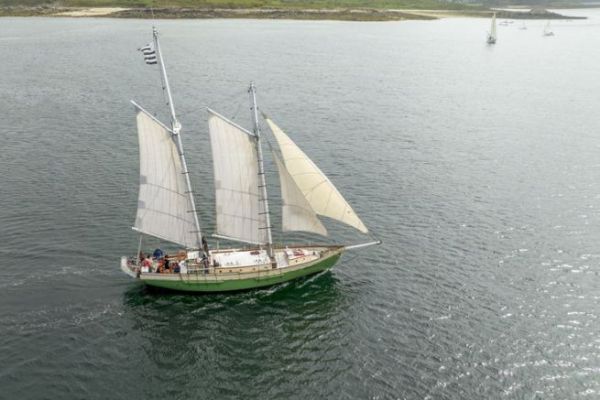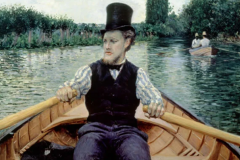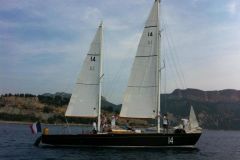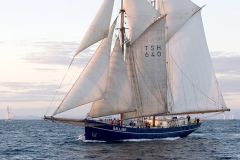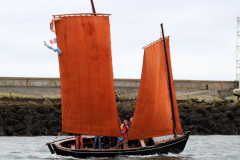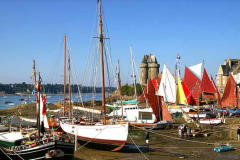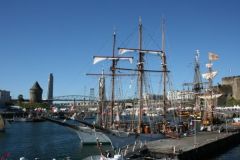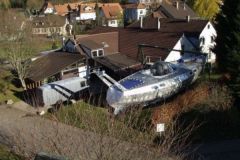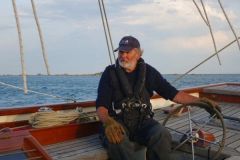A very specific sailing school concept
After having supervised numerous courses, Steven launched the creation of his sailing school with an idea in mind. "I was keen to create a sailing school where we don't push to consume the sea but develop a sense of the sea." So Steven started looking for a sailboat that matched his training goals. That is to say, to put aside performance for a while, to concentrate on weather, the use of charts, tides and life at sea. "So we didn't need a modern racing boat, but rather a traditional boat to take our time more by living at the boat's pace." Once the concept was well defined, the hardest part remained: finding the right partners, financing and starting all the administrative procedures. It was a long epic, but success finally came!
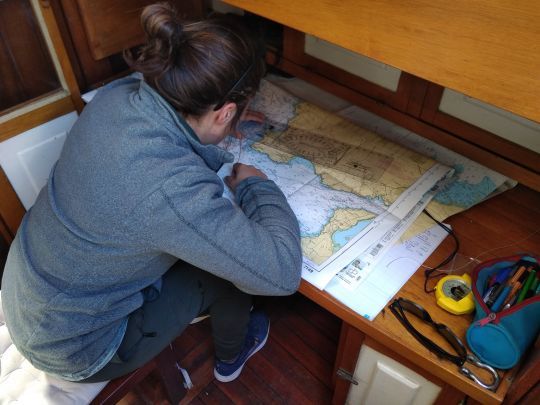
A very limited choice of sailboat
At the same time, Steven was looking at the different ads for old boats for sale. With his criteria and his budget, there was only one that matched: a molded wooden schooner. An amateur construction from the 90's, which was originally built for a round the world trip but never left. For 68,000 euros, the Celtic will finally set sail again with her new owners: Steven and his associates.
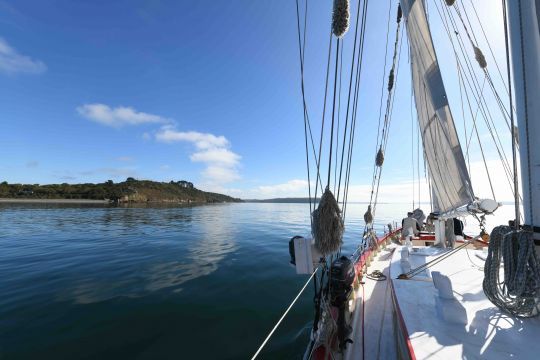
Work for the sailing school "Artimuse
At the time of purchase, the schooner could only accommodate 6 people. Steven then made the necessary adjustments to accommodate up to 8 people, as he details. "First of all, we had to add the safety equipment for the sailing school such as the bib, an EPIRB beacon, lifelines and the addition of anti-roll covers on the bannettes. As for the rigging, some improvements were made. I modified the deck plan at the front to simplify sending the sails and to raise the bowsprit more easily."
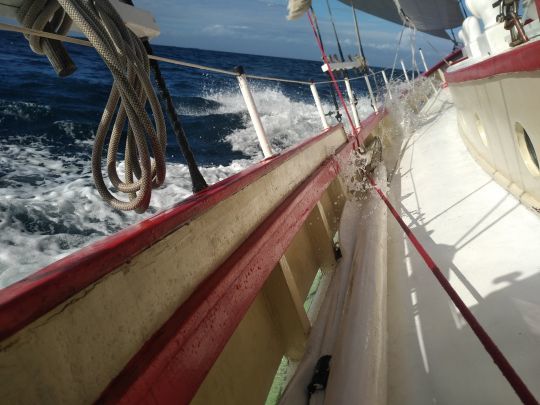
In addition, Steven removed the foresail to add two props to his main mast and thus two staysails. The objective is to improve the Celtic's performance when sailing upwind and to facilitate the lowering of the sails. These last modifications are not yet completed, the tests are still in progress! The boat now has many sails on board: yankee, staysail, small clinfoc, staysail, fisherman and a mainsail.
A comfortable interior design
His skipper appreciates the comfort of the boat. "It's a great learning boat that's a lot of fun to be on." The interior is very spacious, with a navigation area, a crew berth, a large saloon, a comfortable toilet/bathroom, a double cabin and a crew station forward with three berths. At the rear, there is a large storage locker and at the front, a little more modernity, with the anchor locker and an electric windlass.
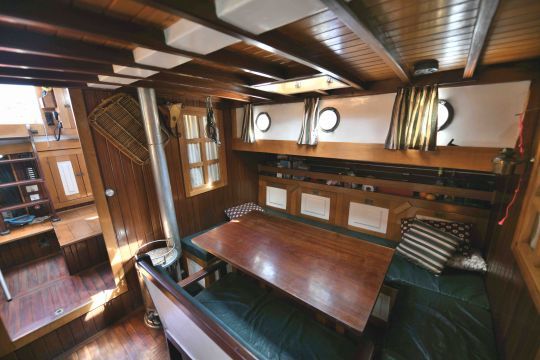

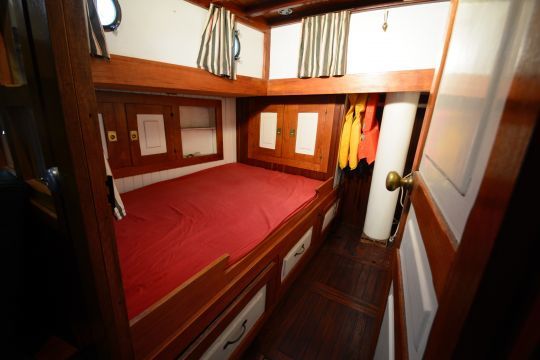
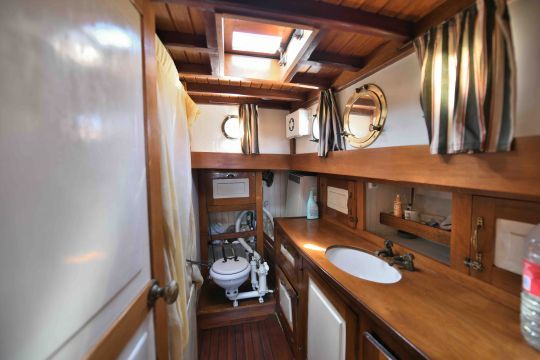
Celtic's behaviour at sea
Steven praises Celtic's offshore behavior: "It goes very well in light weather." The boat being heavy and having a long keel, it is also very stable, which can be very pleasant for people sensitive to sea sickness. However, Steven tempers this with humor: "It goes up as well in the wind as an iron" .
The last point raised by Steven is the shallow draft of the schooner. This is an advantage because it can go everywhere very easily, but on the other hand the righting torque remains low, and it can heel quickly if the sail is not reduced in time.
Plans for the future of this old ship
The instructor announces his program: "The courses start at the end of May 2023 and we will be present at the festival of sea songs in Paimpol in August!" . Today, the school is looking for sponsors to continue to maintain and improve the Celtic.
Steven also plans to take his schooner to more remote destinations such as Norway, Iceland and Greenland.
